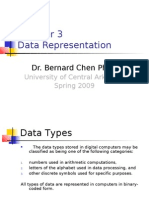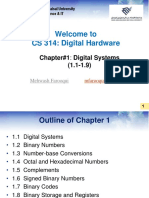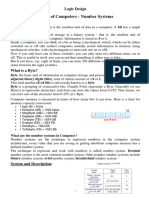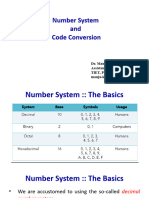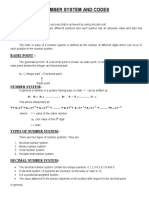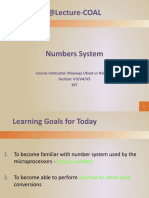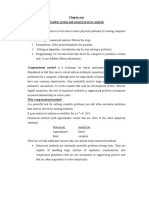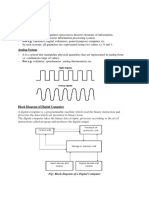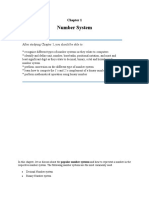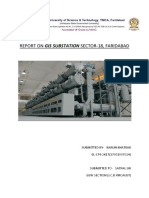0% found this document useful (0 votes)
73 views26 pagesDigital Number Systems Guide
This document discusses number systems used in digital technology. It covers types of number systems including decimal, binary, octal and hexadecimal. It explains positional notation and how the value of each digit depends on its place and the base of the number system. Examples are provided to show conversions between different bases including decimal to binary, octal and hexadecimal as well as direct conversions between binary, octal and hexadecimal. Methods for converting integers and fractions between bases are described. References for further information are also included.
Uploaded by
GautamCopyright
© © All Rights Reserved
We take content rights seriously. If you suspect this is your content, claim it here.
Available Formats
Download as PDF, TXT or read online on Scribd
0% found this document useful (0 votes)
73 views26 pagesDigital Number Systems Guide
This document discusses number systems used in digital technology. It covers types of number systems including decimal, binary, octal and hexadecimal. It explains positional notation and how the value of each digit depends on its place and the base of the number system. Examples are provided to show conversions between different bases including decimal to binary, octal and hexadecimal as well as direct conversions between binary, octal and hexadecimal. Methods for converting integers and fractions between bases are described. References for further information are also included.
Uploaded by
GautamCopyright
© © All Rights Reserved
We take content rights seriously. If you suspect this is your content, claim it here.
Available Formats
Download as PDF, TXT or read online on Scribd
/ 26








